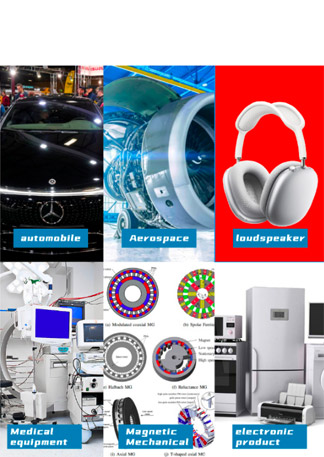In the era of rapid technological development, rare earth permanent magnet materials, especially neodymium iron boron (NdFeB) magnets, are widely used in electronic equipment, electric vehicles, wind turbines, medical equipment and other fields due to their excellent magnetic properties. However, with the accelerated replacement of these products, the number of discarded NdFeB magnets is also increasing. How to effectively recycle and reuse these resources has become an urgent problem to be solved. This article will explore several effective recycling and reuse strategies to promote resource recycling and reduce environmental pollution.
1. Understanding the recycling value of NdFeB magnets
NdFeB magnets contain high-value rare earth elements neodymium (Nd), dysprosium (Dy) and terbium (Tb), which are rare in the earth's crust and have high mining costs. Therefore, recycling discarded NdFeB magnets not only helps save resources, but also eases the mining pressure on primary rare earth mines and reduces production costs. At the same time, iron and boron in magnets are also recyclable metal resources.
2. Recycling process and technology
Classification collection: First, the discarded NdFeB magnets need to be classified and collected to avoid mixing with other types of waste, so as to improve the efficiency and purity of subsequent treatment.
Crushing and separation: The large magnets are broken into small pieces or powders by mechanical crushing, and then the rare earth elements in the magnets are separated from other impurities by physical or chemical methods (such as magnetic separation, flotation, acid leaching, etc.).
Purification and smelting: The separated rare earth oxides are purified to remove impurities, and finally high-purity rare earth metals or alloys are obtained through smelting processes to provide raw materials for the re-production of NdFeB magnets or other rare earth products.
Environmentally friendly treatment: During the entire recycling process, attention should be paid to environmental protection, and effective measures should be taken to prevent wastewater, waste gas, and solid waste from polluting the environment.
3. Strategies to promote reuse
Policy guidance and support: The government should introduce relevant policies to encourage enterprises and individuals to participate in the recycling and reuse of NdFeB magnets, and provide incentives such as financial subsidies and tax incentives.
Technological innovation and R&D: Strengthen technological research and development, improve recycling efficiency and purity, and reduce recycling costs. At the same time, explore new recycling technologies and material alternatives to reduce dependence on rare earth resources.
Establish a recycling system: Build a complete recycling network, including setting up recycling sites, cooperating with manufacturers to establish a recycling mechanism, and promoting online recycling platforms, so as to facilitate the participation of the public and enterprises in recycling activities.
Enhance public awareness: Through publicity and education, improve the public's awareness of the scarcity of rare earth resources and the importance of recycling and reuse, and encourage everyone to actively participate in recycling actions.
International cooperation and exchanges: Strengthen international cooperation and exchanges, share recycling technologies and experiences, and jointly address the shortage of rare earth resources and environmental pollution.
 HC Magnets
HC Magnets
The company has eight advanced production lines of electroplating process, which can fully ensure customers' various difficult requirements for product coating. And relying on Ningbo's strong front processing capacity, it can stably process and produce N52,N42,N50M,N48H, and other high-performance ndFeb. We are well-known in China and have received welcome from various buyers for on-site inspections, Accept testing and provide free samples Founded in 2017, formerly known as Hangzhou Jiahe Magnetic Ware Factory was established in 2005, Hangzhou Heci Technology Co., Ltd. has been engaged in magnetic industry for 18 years. It is a new high-tech enterprise integrating production, processing, and sales, specializing in the production of permanent magnet materials such as NdFeB magnets. The company is now located in Ningbo, the eastern port city of Yangtze River Delta. The company has the capacity of processing 1000 tons of high performance NdFeB magnets per year. Our products are mainly sold to India, Vietnam and Germany.
Resources
News
- How Do NdFeB Magnets Compare to Other Permanent Magnets in Industrial Applications?
- What are the advantages of using NdFeB Magnets in medical devices?
- Size and shape selection of NdFeB magnets: a key game in engineering applications
- What is the important role of NdFeB Magnets in automobile manufacturing?
- How to determine the magnetic field strength requirements of NdFeB Magnets in specific applications?
- Why NdFeB Magnets are the preferred magnetic material in modern motors and generators?
- How do NdFeB Magnets improve the power output of power tools?
- How do NdFeB Magnets help improve the efficiency of wind turbines?
- How to use NdFeB Magnets to improve the battery performance of electric vehicles?
- How to reduce the demagnetization of NdFeB Magnets?
- When using NdFeB Magnets, how to prevent them from interfering with other devices?
- How to Choose NdFeB Magnets for High-Density Applications?

 English
English 中文简体
中文简体




